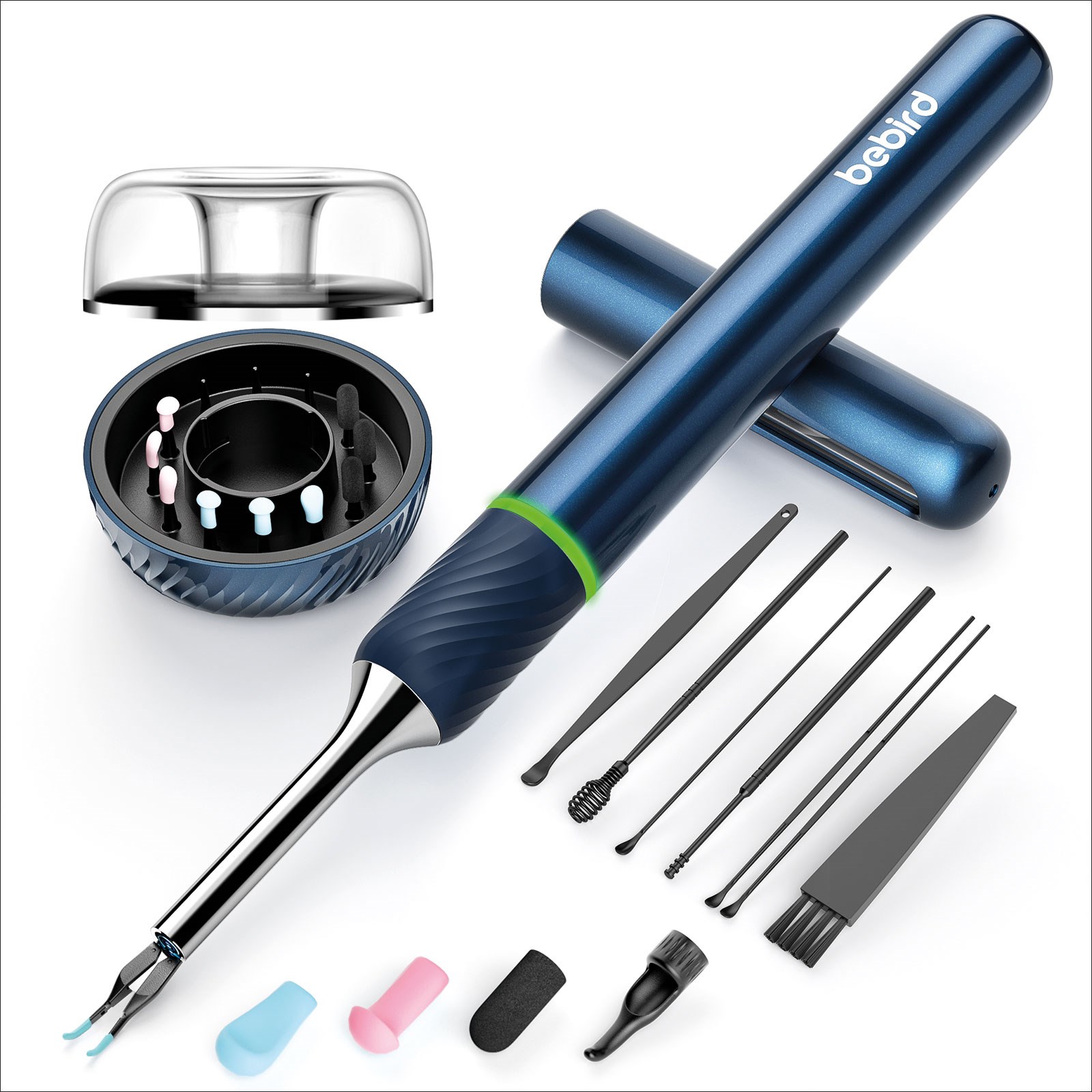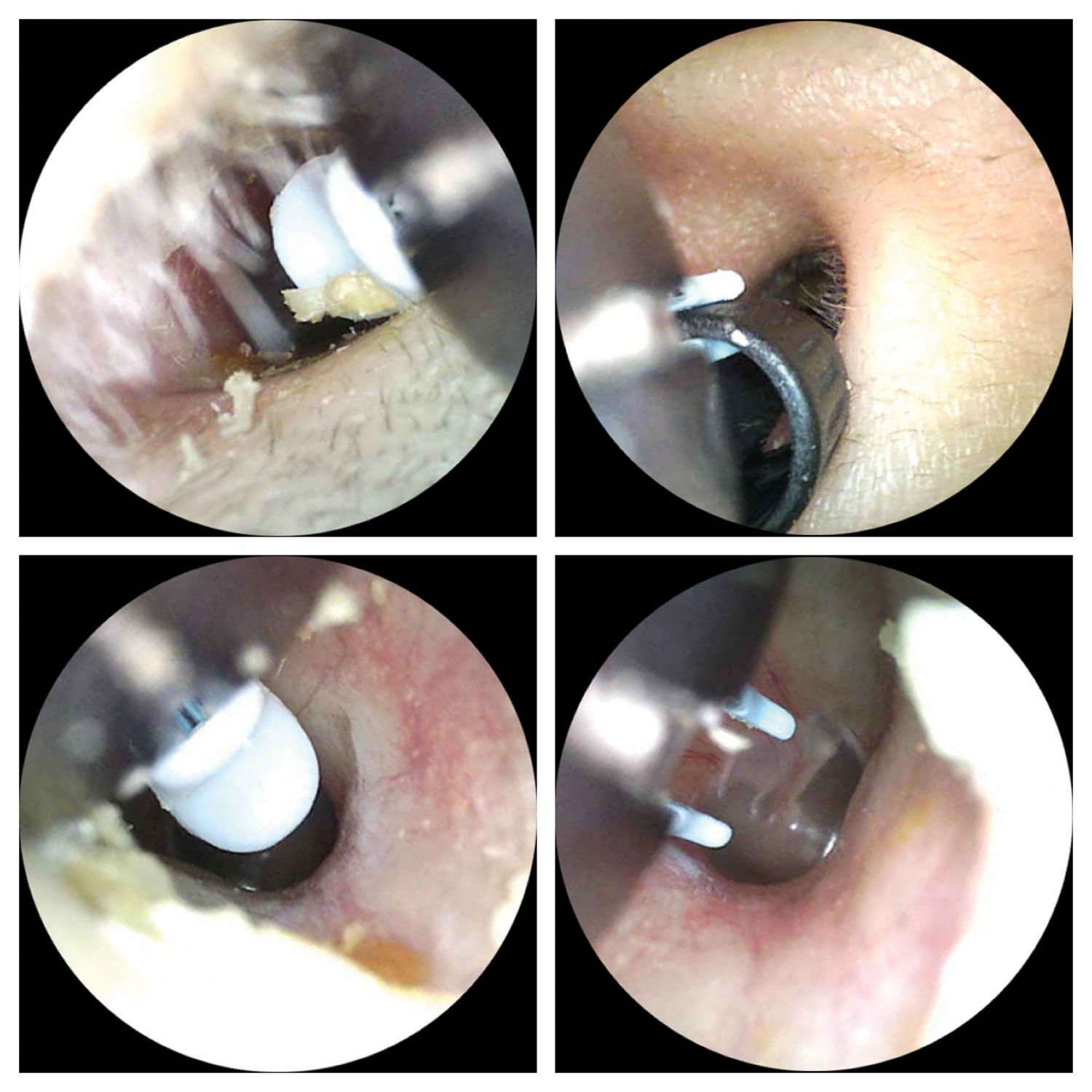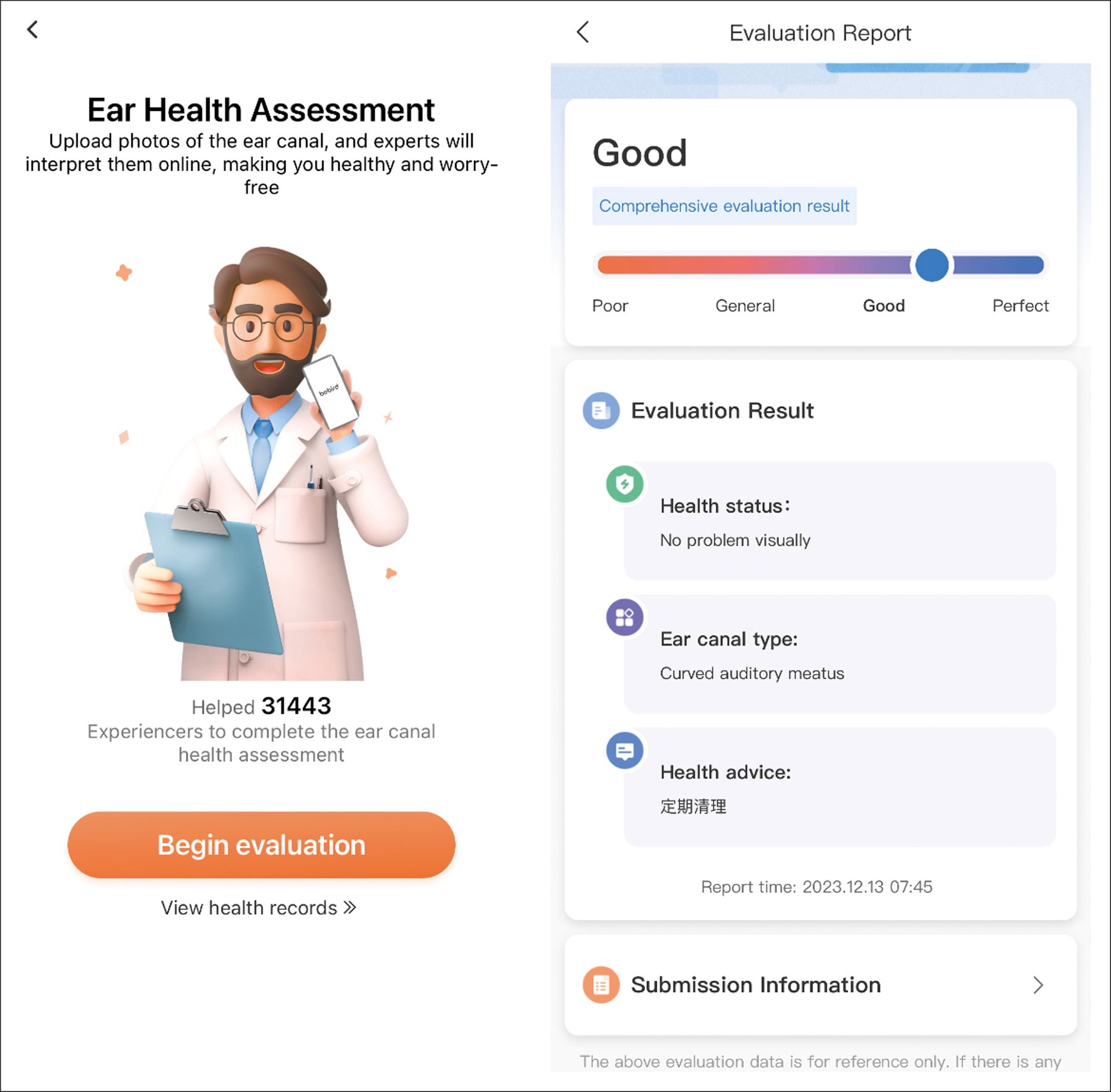As ENT and audiology professionals, wax impaction and aural foreign bodies are common presentations to our clinic that can cause significant distress to patients and can preclude diagnostic testing such as pure tone audiograms and tympanometry.
We often advise patients to not self-treat with cotton buds, or use blind instrumentation to remove wax, instead recommending letting the ear self-clean or using olive oil drops. However, with affordable and commercially available otoendoscopes, patients are given the ability to remove their own wax under vision. We review one of these products, the Bebird (http://bebird.com/) Note 5 Pro, to determine its usability and safety.

Figure 1: Bebird Note 5 Pro. Image courtesy of Bebird.
Product
The Note 5 is a pen-sized otoendoscope (Figure 1) with a 4mm-wide rigid rod and a 10mbp lens that connects wirelessly to a smartphone. It took about one minute to set up after downloading the related (free) app, and was comprehensive. It has forceps that protrude in front of the camera, which are open and closed by squeezing the end of the pen. This is easy to do but feels a bit unbalanced in the hand, given where the button is situated. These forceps can then be sheathed by one of the many attachments for wax removal, and the 360-degree view from the camera is pinged to a phone screen, where videos and pictures can be saved. Thankfully, the battery life is more than enough to look into both ears (90 minutes) but takes a long time to recharge (60 minutes).
Attachments and usability
After setup, it took a bit of time to achieve orientation. I could immediately see the length of the ear canal. The ear wax silicone tip attached securely and removed wax easily on first usage without much discomfort from the lateral canal, however removing wax deeper in the canal was more uncomfortable and I could not continue. This was due to the otoendoscope, which felt quite hot over time, making contact with the inside of the external auditory canal. Looking at the manual, however, the product would not exceed 45 degrees Celsius, which at least means that it should not cause a thermal burn.
"The ear wax silicone tip attached securely and removed wax easily on first usage without much discomfort from the lateral canal"
The device comes with other attachments (dome and sponge ear tips, as well as the observation hood), but these were not useful, and I could not see how this would help remove foreign bodies or wax. In fact, one attachment (the observation hood) fell off during the test, getting stuck in the canal! This was a good opportunity to test the forceps and, to its credit, I was able to manouevre and retrieve the foreign body with relative ease. The product manual also described a gyroscopic feature that reduces shaking; however I could not obviously appreciate this.

Figure 2: Image taken in Bebird App during testing.
Top L-R: Wax removal from lateral ear canal; foreign body removal of the attachment that fell off during testing.
Bottom L-R: Attachment (silicone wax scoop) obstructing field of view; attachment removed to reveal forceps. Tympanic membrane seen, however quality may not be adequate to comment on pathology/ear health.
Image quality
Regarding the image quality, this was fair given the cost of the product. I could identify any obvious macroscopic abnormality in the ear such as wax impaction or a foreign body. At a stretch, I could probably identify a large perforation in the eardrum too, however I would not confidently use this as a diagnostic tool. A large proportion of the field of view is obstructed by the attachment itself (Figure 2) meaning reduced vision, as well as the added possibility of inadvertent deep trauma in the ear canal on instrumentation.

Figure 3 L-R: Ear assessment tool; results of ear assessment tool received,
scoring ‘good’ ear health, and advice to ‘clean [ear] regularly’.
Ear assessment tool
Interestingly, the app offers an ‘ear health assessment’ which is a beta function (Figure 3). Once you have created a profile with your name, sex and age, you take a picture of the inside of the left and right ears and send it to an ‘expert’ to conduct a spot diagnosis. Once I had done this, I was surprised to receive my health result within a day stating I had good ear health. I was flattered, but wondered what would be required for it to be ‘great’ ear health. I was advised to ‘clean [my ears] regularly’.
"One attachment fell off during the test, getting stuck in the canal"
I found this interesting as, for the majority of our ENT patients, we state that the ear is self-cleaning and doesn’t need regularly cleaning. We know that wax is actually helpful and can reduce outer ear infections, therefore regularly cleaning out the ears may cause more harm (trauma and removal of an acidic environment) than good. Furthermore, regarding the wider assessment, I would not have been confident to assess my ear health given the subpar quality images of the eardrum and no clinical history to go alongside, and therefore I am hesitant to rely on the in-app assessment, even if it is a nifty feature.
Recommendations and summary
To summarise, I would still not routinely recommend ear cleaning using any device. However, for trained individuals, the Bebird Note 5 is helpful for removal of certain foreign bodies and laterally situated ear wax, and is easy to learn how to use after a short time.
Warnings
Patients should be aware that the majority of people do not need to routinely clean out their ears. Furthermore, the usage of these devices without proper training or knowledge may lead to injury to the ear canal and ear drum which can lead to infection and worsened hearing.
Positives
-
Good spot diagnosis of wax impaction, foreign body
-
Able to remove wax and some foreign bodies in lateral canal
-
Better than blind wax removal
-
Good battery life
-
Good warnings about not using force and causing damage in the ear
-
Plug and play – easy setup with decent image
-
Cotton buds included to clean grease off the scope
Negatives
-
Attachments: Some not useful, may fall off in the ear, or obstruct field of vision
-
Quality not good enough for diagnostic ear drum/infection
-
Less useful deep in the ear – uncomfortable at this depth (most children wouldn’t tolerate this)
-
Radiates heat in the ear which can feel uncomfortable after a couple of minutes
-
Takes a bit of time to get used to
-
User dependent: Dexterity and coordination required to be able to angle the endoscope to see beyond the attachments
-
Ear assessment tool may give false reassurance and delay assessment by medical specialist. Unknown ‘expert’ reviewers





